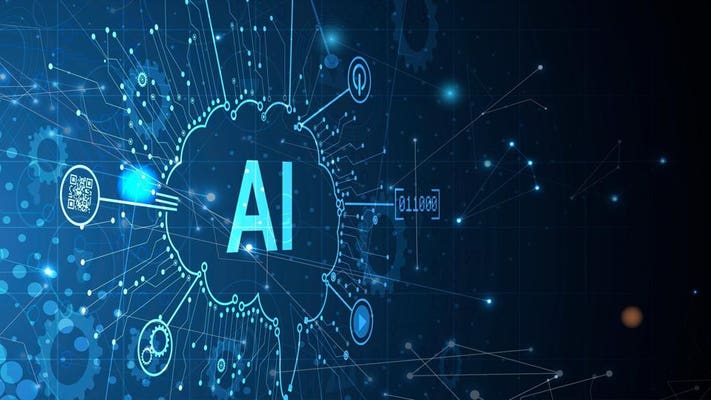OpenAI 5 gigawatt data centers" placed naturally in the title, introduction, and throughout the content
 🚀✨ Tech Scope 🔍🤖
🚀✨ Tech Scope 🔍🤖
OpenAI is seeking government support to build massive AI data centers, but experts question whether current energy infrastructures can handle their astonishing power demands. As artificial intelligence (AI) becomes integral to business innovation and national security, these data centers could change the future of AI—if they prove feasible.
OpenAI's Ambitious 5 Gigawatt Data Centers
At a recent White House meeting, top AI leaders, including OpenAI CEO Sam Altman, discussed the need for accelerated infrastructure development to support AI growth. Following this meeting, the Biden administration announced efforts to streamline the construction of AI data centers, emphasizing alignment with economic, environmental, and national security goals. However, new reports from Bloomberg and the New York Times reveal that OpenAI’s vision is far more ambitious than expected.
OpenAI is reportedly pursuing government assistance to build data centers requiring 5 gigawatts of power each—an amount equivalent to five nuclear reactors. This level of energy consumption is on par with powering entire cities, such as Miami. To put this into perspective, a standard data center uses about 100 times less energy. With plans for multiple centers, Altman’s proposal has sparked skepticism, with some experts calling the scale “impossible” under current infrastructure.
AI and Energy: A Challenging Equation
To maintain its leadership in the AI space, OpenAI must invest in massive computational power. The proposed data centers, which would house millions of AI chips, are estimated to cost around $100 billion each. This power demand stems from the need to support generative AI models, like OpenAI’s GPT series, which require continuous and extensive processing capabilities. But meeting the energy needs of these centers poses a significant challenge.
Alex de Vries, founder of Digiconomist, a tech energy research firm, stated that seven of these 5GW data centers would consume twice the power used by the entire state of New York. Such power demand represents more than 1% of global electricity consumption. De Vries highlighted a crucial point: most power grids do not have the spare capacity to handle such continuous loads, especially for facilities as large as these proposed data centers.
The Global Impact of OpenAI's Energy Demands
Though OpenAI’s 5GW data centers may seem excessive, other tech companies are also planning for increased energy consumption in the AI age. For example, Amazon Web Services (AWS) recently purchased a data center in Pennsylvania near the Susquehanna nuclear power station, securing access to 960 megawatts of power. Microsoft, too, has struck deals for nuclear power to sustain its AI workloads, further indicating that AI’s future is inherently tied to massive energy use.
However, some experts remain unconvinced about the feasibility of OpenAI’s plans. Joe Dominguez, CEO of Constellation Energy, expressed doubts, noting that no grid currently has the capacity to support such demands. “Whatever we're talking about has never been done, and it's not feasible in a timely manner,” Dominguez said.
Local Resistance to AI Data Centers
OpenAI's push for larger data centers comes at a time when governments and communities are raising concerns about the local impact of these facilities. Data centers need constant cooling, often relying on either air or water cooling methods, the latter being more efficient for high-performance AI systems. As a result, local and national governments are scrutinizing the effect of data centers on water resources and energy grids.
In the U.S., laws and regulations in states like Virginia, Arizona, and Illinois have begun restricting data center development due to these concerns. The White House has suggested using retired coal plant sites for data centers, as they already have existing grid connections. However, finding suitable locations remains a challenge, with space and energy capacity becoming scarce.
Conclusion: Is OpenAI's Vision Feasible?
While OpenAI leads in generative AI technology, the company’s future may hinge on its ability to build and power its proposed data centers. The staggering energy requirements—up to 5 gigawatts per center—present a significant hurdle. As tech companies like OpenAI continue to push the boundaries of AI capabilities, the question remains: Can the global energy infrastructure keep up?
Ultimately, Altman’s vision for AI-driven data centers may represent the next frontier in computing, but realizing this goal requires navigating energy constraints, infrastructure limitations, and environmental considerations. Whether this ambition becomes reality—or proves unattainable—will determine the course of AI development in the coming years.
Subscribe to my newsletter
Read articles from 🚀✨ Tech Scope 🔍🤖 directly inside your inbox. Subscribe to the newsletter, and don't miss out.
Written by

🚀✨ Tech Scope 🔍🤖
🚀✨ Tech Scope 🔍🤖
I’m the creator behind Tech Scope, where my passion for technology drives me to bring you the latest in gadgets, AI developments, and cutting-edge tech tools. With a keen eye for industry trends and a commitment to delivering in-depth reviews and insights, I aim to keep you informed and ahead of the curve. Whether you’re a tech enthusiast or a professional, my goal is to provide you with concise updates and expert analysis on the most exciting advancements in the tech world. Join me on this journey to explore and understand the innovations shaping our future.